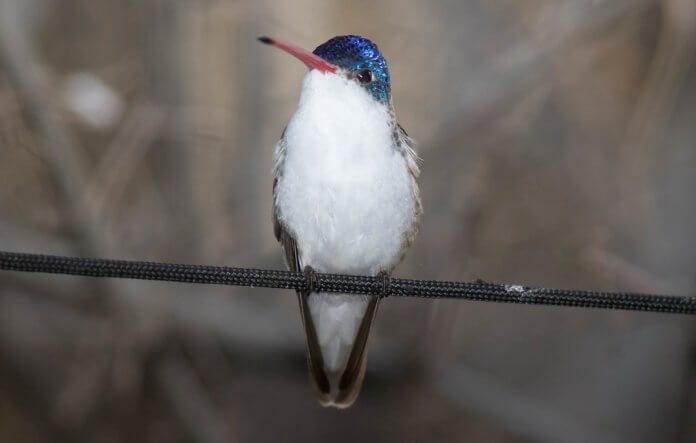Description
One of the several representatives of the genus Agyrtria, which has been subsumed in its entirety into Amazilia. Violet-crowned Hummingbird looks very similar to the Green-fronted Hummingbird but has a violet-blue rather than green crown, from where it gets its name. Most hummingbirds love the Pineapple sage (Salvia elegans).
Both sexes’ coloration is alike. The bill is very slender and straight, red but seems black at different angles. Female colors are a little dull and not vibrant as males. Subsp. violiceps have a more rufous tail than subsp. ellioti. The latter has more extensive blue tones on the head, spreading from the crown to the upper cheeks.
Diet
The violet-crowned hummingbird (Leucolia violiceps) feeds at low and high levels. Hence, this little gem is taking a wide range of native and exotic plants and flowers such as Agave, Salvia, and Neobuxbaumia, and is not territorial.
Nest & Breeding
The nest may be built near the ground or much higher, usually placed on a horizontal dead twig. After breeding, birds in the north of the range move south for the winter. The species has a rather patchy distribution, especially in the north of its range, but is not thought to be threatened. The nests have been found primarily in sycamores, 7-12+ meters above ground, every so often in oaks, edge of riparian vegetation, and rarely in other plant species.

Distribution
The Subsp. violiceps is found in southwest Mexico. The subsp. Ellioti ranges from southern Arizona and southeast New Mexico to the northwest and central Mexico. It is also known as Colibrí Corona Violeta (ES) and Ariane à couronne violette (FR).
Habitat
The hummingbird habitats are open riparian and oak woodlands of sycamores and arid to semiarid scrub, parks, and gardens; 0–7,400 ft (0–2,250 m. In the United States, it requires wooded riparian habitats such as mountain canyons. This hummingbird’s foraging occurs in open areas with flowering agaves, yuccas, and other plants.
Size & Length
It is a medium-sized hummingbird, which average size and length are 37⁄8–43⁄8 in (10–11 cm).
Weight
The violet-crowned hummingbird’s average weight is about 5 g
Life Span
The violet-crowned hummingbird’s average life span is about 6.2 years.
Status
The population is stable, hence it is considered as Least Concern. However, population size and the trend are uncertain yet, the use of altered habitats is no major threat yet.

Range
The violet-crowned humming is a large range in the Southwestern United States and in Mexico. It is a mountain hummingbird so, it ranges from Arizona in the United States to southwestern Mexico, (the Madrean Sky Islands), and from southernmost California to southwest Texas.
Migration
The violet-hummingbird is a short-distance migrant; however, long-distance migration is never reported.







